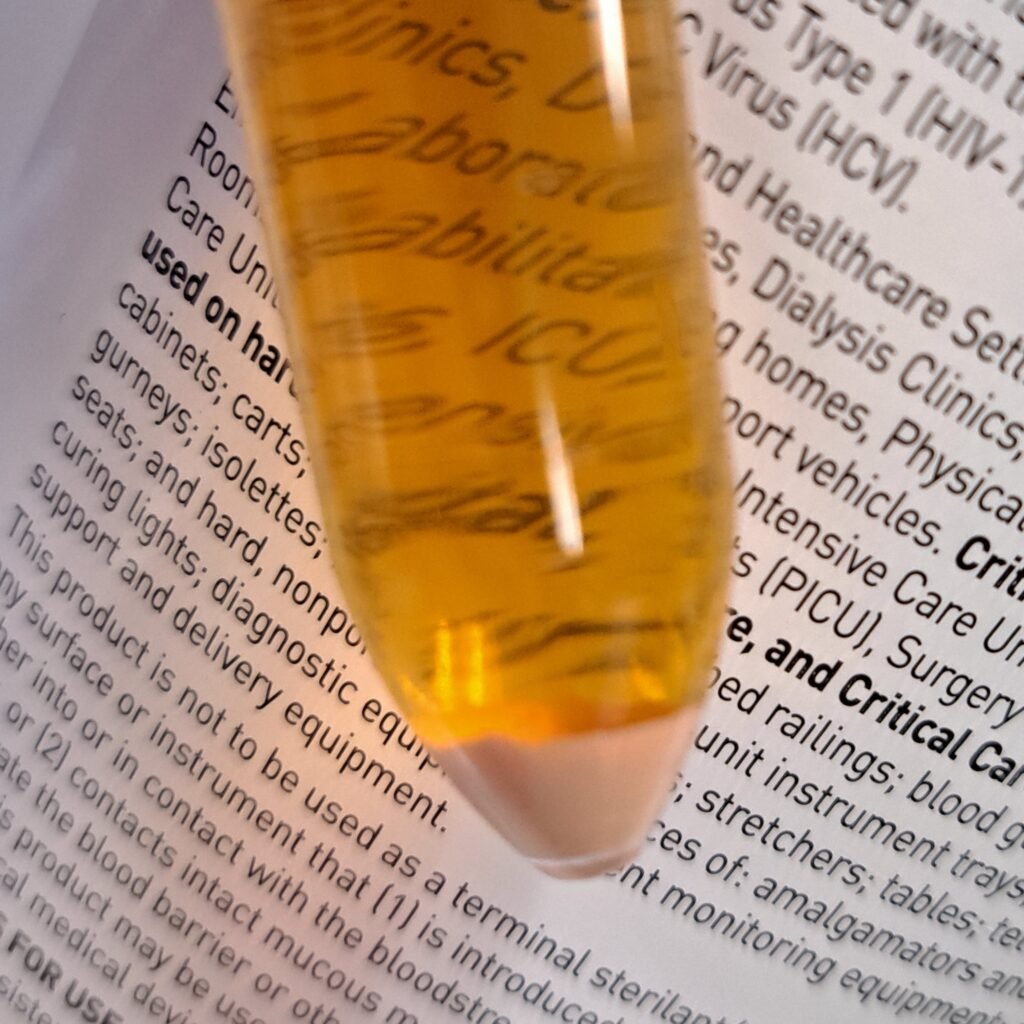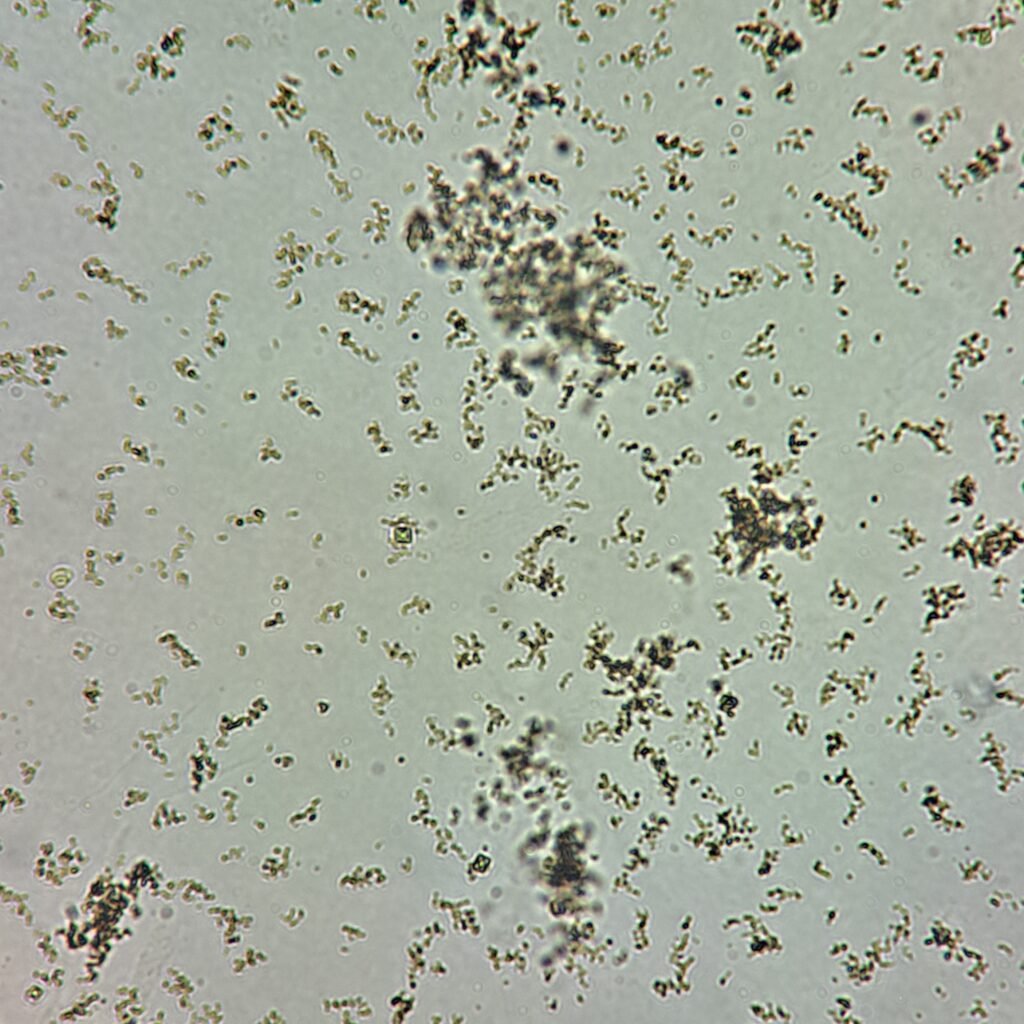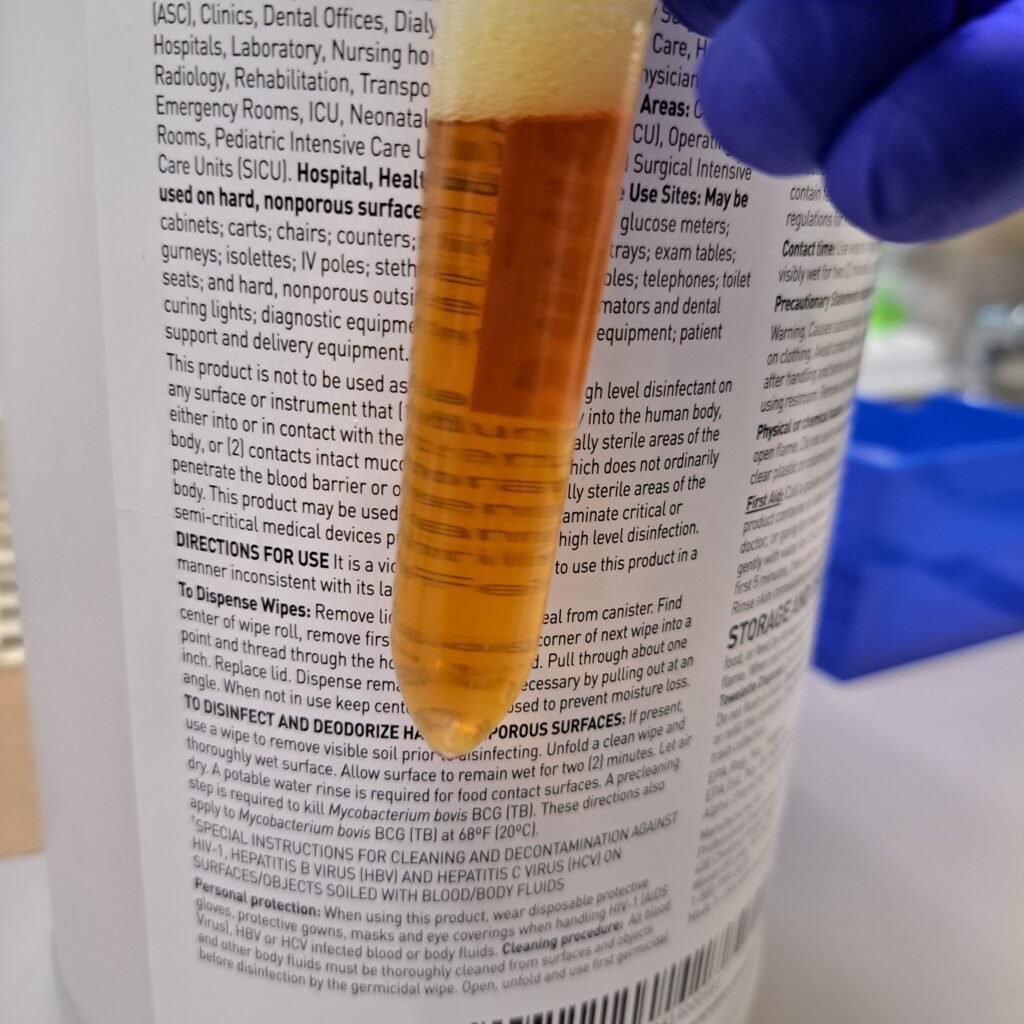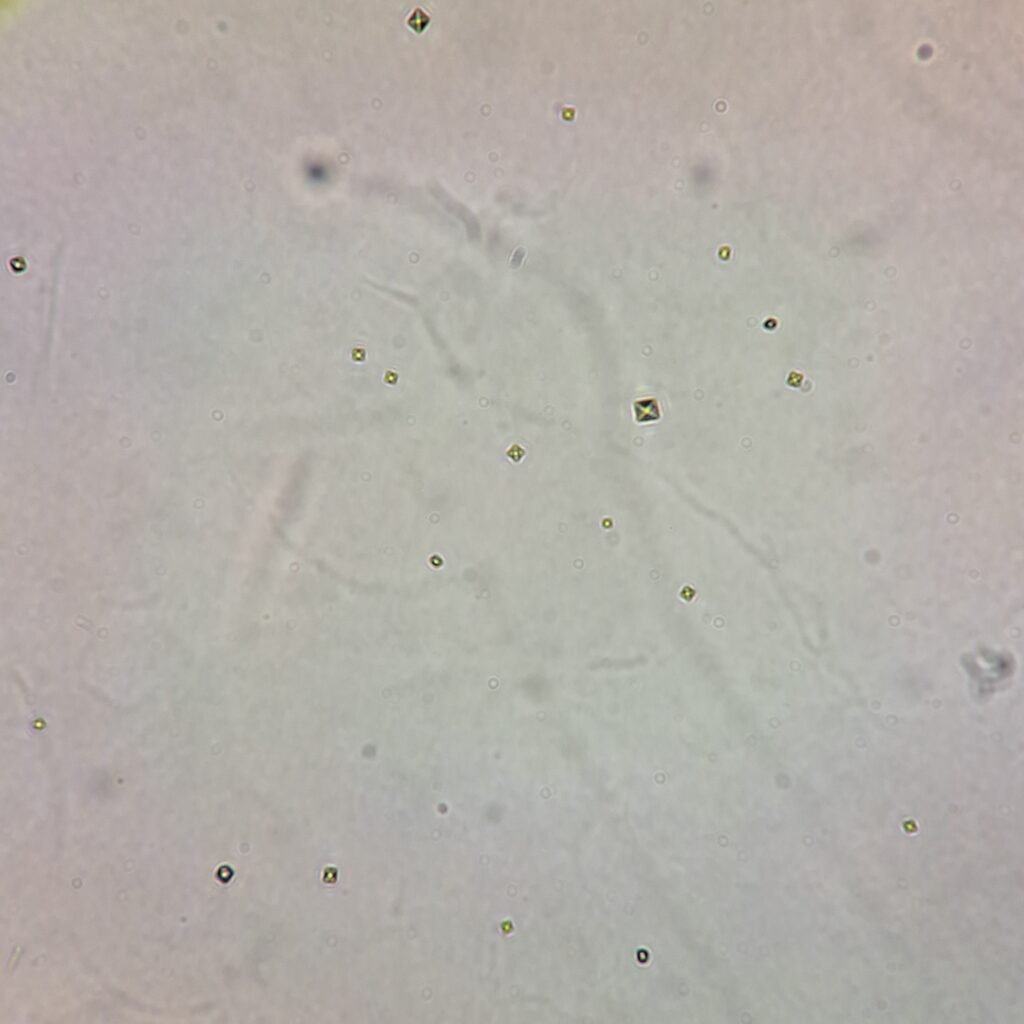A urinalysis is added on to a refrigerated urine. The urine is extremely turbid with a pH of 5.5. Note that it is best practice to let the specimen come to room temp before testing. For the sake of example, this is not done.

After spinning the urine sample, a layer of “brick dust” sediment can be seen at the bottom.

This sediment is filled with small granules. The brownian movement of these granules can be easily confused for bacteria or hide the presence of it.

The urine is resuspended and repoured into another tube. This time, it is heated for 10 minutes. The urine appears completely clear after the dissolution of the amorphous urates.

Looking at the urine sediment this time, we can confirm the absence of bacteria. In addition to that, Calcium Oxalate crystal can now be seen that were previously obscured by the amorphous urates.
Did you see the CaOx crystals in the previous sediment picture? (Hint: look just left of the center)

Click here to learn more about amorphous urates and see more pics!

